Until 1937, the headquarters of the London Fire Brigade had been located in Southwark Bridge Road. In July of that year His Majesty King George VI, accompanied by Queen Elizabeth, formally opened the new headquarters at 8 Albert Embankment.
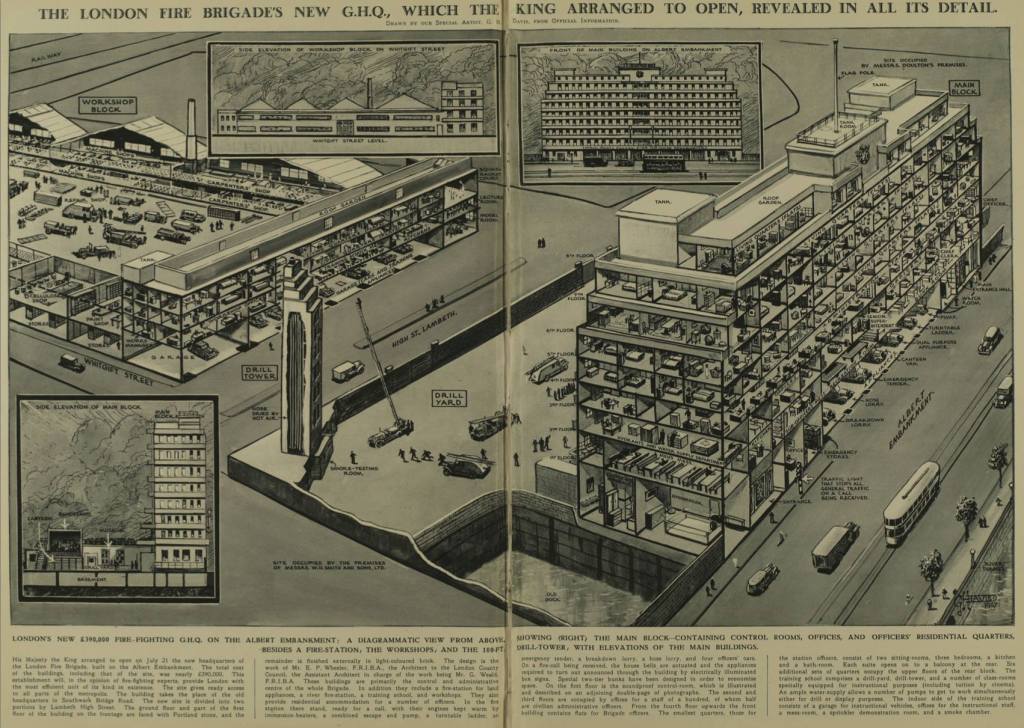

Picture credit-London Fire Brigade.
The new headquarters was state of the art. It comprised the fire station, with accommodation for the firemen there, residential accommodation for the Chief Officer, Deputy Chief, and other senior officers. The complex included a Brigade training school, repair and maintenance workshops, drill tower and spacious drill yard for both drills and displays. From the imposing seven wooden appliance room doors Lambeth’s appliances could drive directly onto the Embankment. Directly opposite the headquarters was the new Lambeth river fire station pontoon. Located on the second floor of the headquarters was the brigade control room, which supported the six superintendent stations who responded to emergency calls requiring a fire brigade presence.
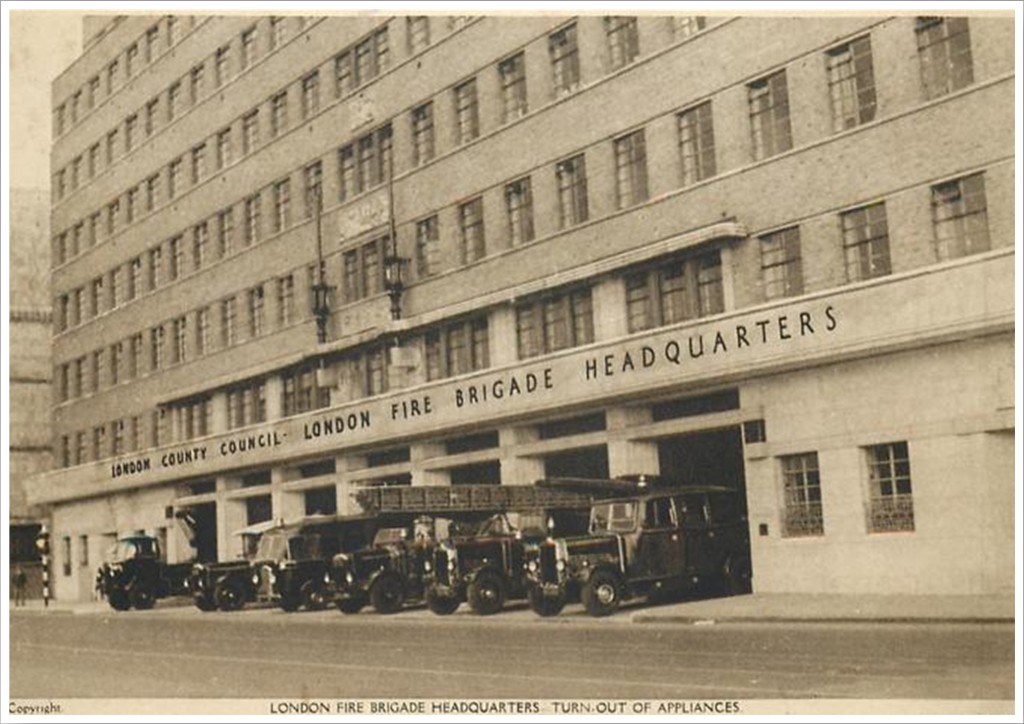
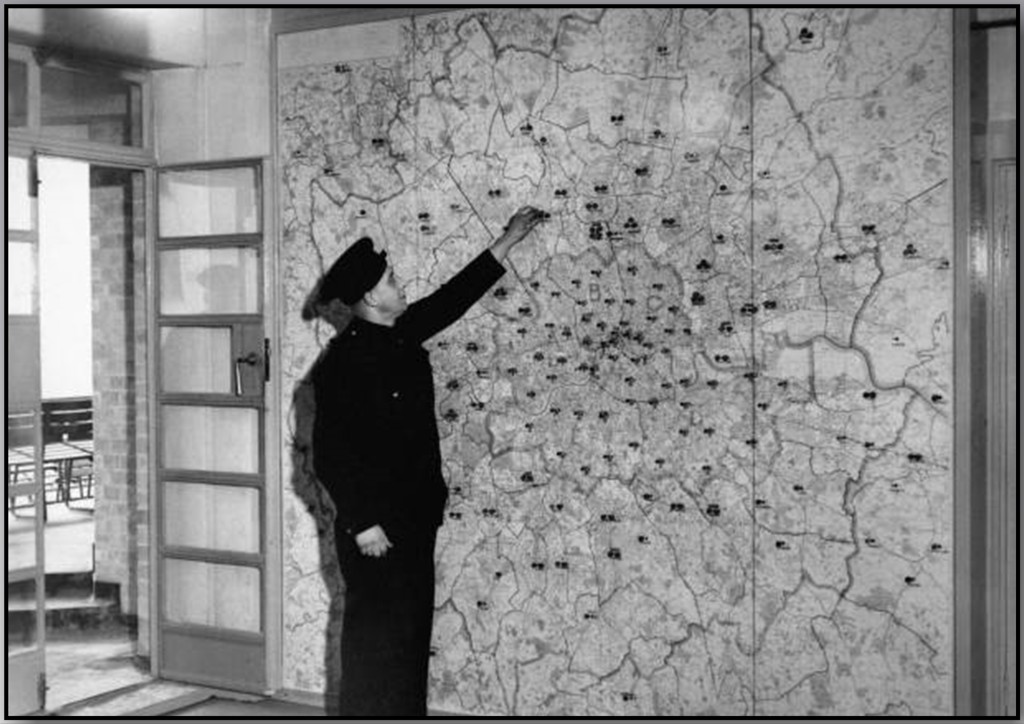
Picture credit-London Fire Brigade.
With the prospect of war imminent the Brigade’s Chief Officer, Cmdr. Firebrace, was seconded to the Home Office and his deputy, Major Frank. W. Jackson, commanded the renamed London Fire Service, which covered of boroughs and brigades surrounding the London Council County boundary. Part of the Brigade’s war planning response was to relocate the Brigade Control room into the basement of the headquarters. Thankfully, the period of the ‘phoney war,’ where the anticipated enemy attacks on London and the UK failed to materialise allowed the construction to proceed uninterrupted. The control room was completed in record time and in April 1940 Lambeth opened its new underground fire brigade control room. It was constructed to withstand a direct hit from a high explosive bomb and also to render ineffective a poison gas attack. The control room, which had its own reserve generator of lighting and forced ventilation, was also sealed by water tight doors. Above ground the ‘snorkel’ tower (which also provided an emergency escape route) was built in the shape of an obelisk and designed to pierce any debris from any building that might fall upon it.

Picture credit. London Fire Brigade.
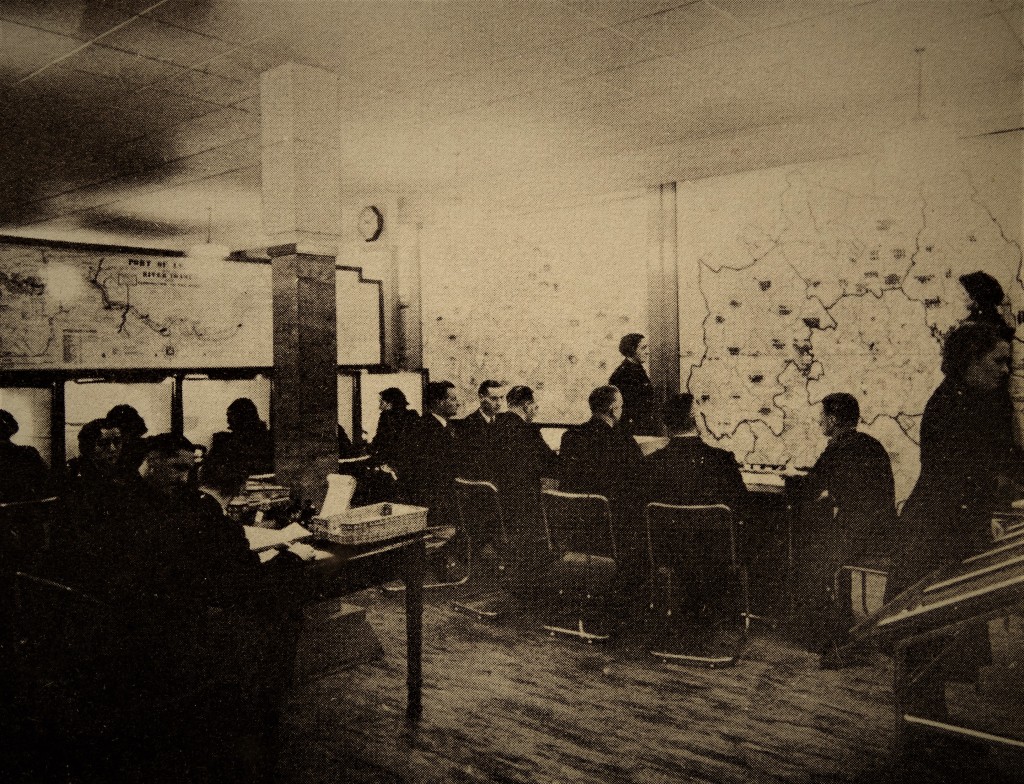
Picture credit-London Fire Brigade.
The Blitz on London commenced on the 7th September 1940. In the underground control room, Major Jackson, with a small band of senior officers, watched the deployment on the big wall maps. Around London local control rooms had been established to deploy the vastly increased resources of the London regular brigade with the introduction of the Auxiliary fire service (AFS) prior to the outbreak of hostilities. The LFB brigade control room personnel were greatly supplemented by women of the AFS.

Rescue services, already hard-pressed, arrived too late for any lives to be saved.
Thirty-two firemen and two firewomen died at The Old Palace School, the largest number of Fire Brigade lives lost in a single incident, in peacetime or war. Winifred Alexandra Peters was one of the two firewomen killed
With the establishment of the National Fire Service (NFS) in August 1941 the London area comprised of five fire forces (reduced to four in 1943) and the area resembled the Greater London area the Greater London Council became in 1965. Lambeth’s basement control room retained its central co-ordination role. From 1945 to March 1948 the NFS was occupied in maintaining a peacetime service. The Fire Service Act of 1947 imposed duties on all UK fire brigades.
(1) It shall be the duty of every fire authority in Great Britain to make provision for fire-fighting purposes, and in particular every fire authority shall secure—
(c) efficient arrangements for dealing with calls for the assistance of the fire brigade in case of fire and for summoning members of the fire brigade;
Big improvements had been made by which London’s fire brigade handled calls. The system of calls being directed to ‘superintendent’ stations around London ceased in 1948. During the war years two-way radio had been increasingly, and successfully, used to send radio information to and from fires and other incidents. Because the radio had to be operated from a central point the birth of the modern control room came into being in the basement of the Lambeth headquarters. Significant alterations were made to the former control, in fact it was totally revamped.

Picture credit; London Fire Brigade.

Picture credit; London Fire Brigade.

The ’new’ control was opened in 1948. It was where all ‘999’ calls were received in the LCC area and station appliances could be ordered to incidents. (In 1949 the LCC also decided to abolish street fire alarms-which had caused increasing numbers of false and malicious calls.) The call sign of the Brigade control radio scheme was M2FH. The control room would remain unchanged until 1966 when it once again underwent a major revamp. The LCC had authorised the adoption of a new mobilising system in 1963, the teleprinter involved the transmission of calls to fire stations by teleprinter, with phone lines used as a fail-safe back up system. However, due to delays in the supply of automated telephone equipment the system did not come into operation until the Greater London Council was created in 1965.
With the help of both the Home Office and the Post Office (GPO) the now Chief Officer, Mr L. W. Leete, the Lambeth control had the advantage of both the teleprinter and automated telephone system when it went live in 1965. (It was formally opened in 1966 by Her Majesty Queen Elizabeth, accompanied by His Majesty Prince Phillip, made a visit to the Brigade’s centenary celebrations at the Lambeth headquarters.)
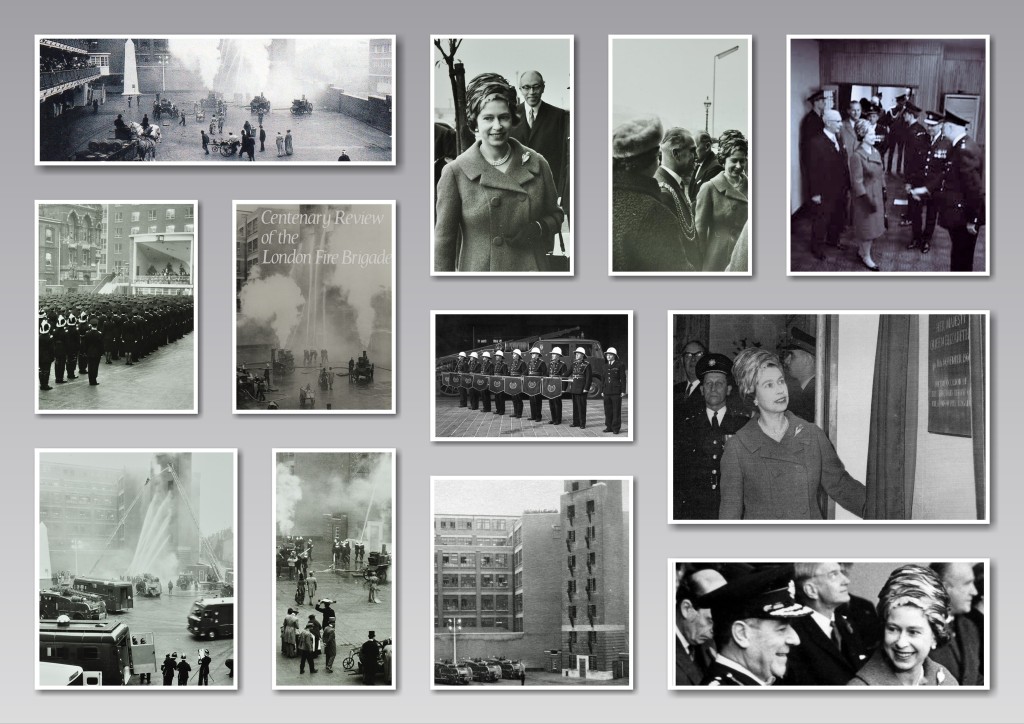
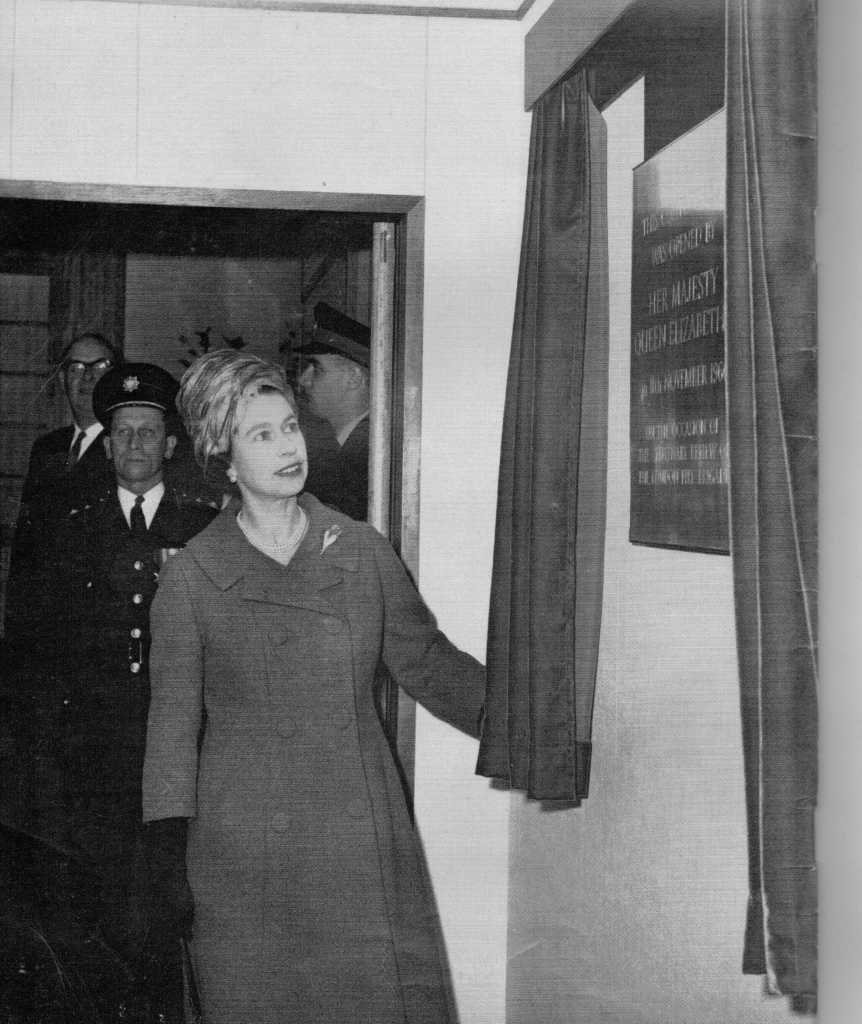
Photo credit: London Fire Brigade

In 1965, the amalgamation of the various brigades onto the new London Fire Brigade provided an impressive array of new (and some not so new!) equipment. This included three additional control rooms at Stratford, Wembley, and Croydon, each with a designated area on control. However, Lambeth maintained jurisdiction over its former LCC area and took on a co-ordination role of major incidents.

The shutters finally came down on Lambeth’s M2FH control room in 1974 after twenty-six years of continuous mobilising. Its control staff were dispersed to the three remaining control rooms, with Lambeth control’s mobilising area being absorbed by them. mobilised by the control staff at the Croydon control room, who were responsible for mobilising all stations south of the River Thames. The other two control rooms were located at Wembley, the old Middlesex Fire Brigade control room, and Stratford, the former West Ham Fire Brigade control. Wembley covered the west of London whilst Stratford mobilised the east.
A central mobilising control would eventually return to Lambeth and, once again but for now it was an end of an era as the other three controls mobilise their additional new charges.
This blog is dedicated to all LFB control room personnel, past and present. A vital ingredient to a successful team.